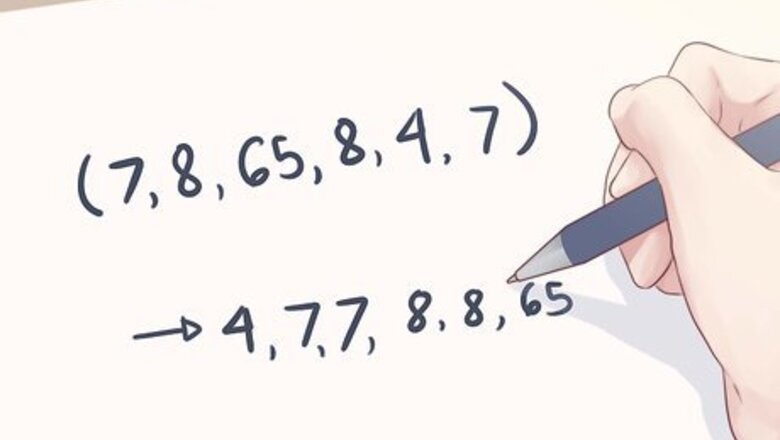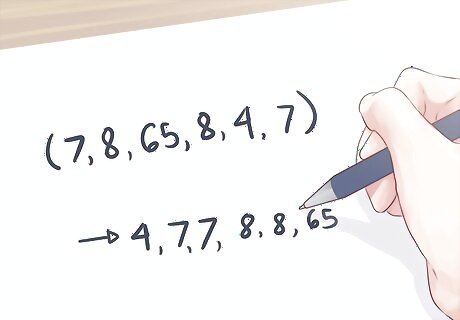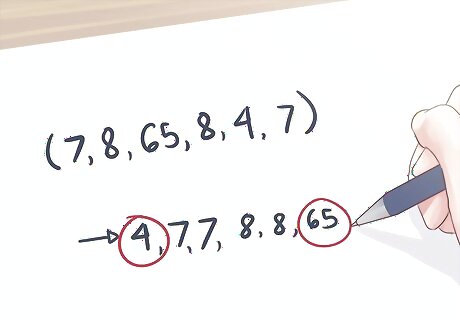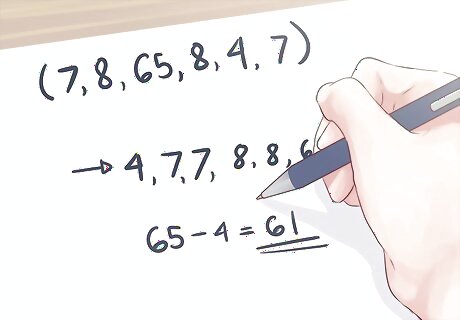
views
X
Research source
If you want to know how to quickly calculate the range of a data set, see Step 1 to get started.

Arrange the set of numbers in order from smallest to largest. Let's say your data set contains the following numbers: {7, 8, 65, 8, 4, 7}. All you have to do is rewrite them from smallest to largest, to get a better sense of the data you are working with. Here's how it would look: {4, 7, 7, 8, 8, 65}.

Identify the smallest and largest numbers in the set. In the set you are working with, the smallest number is 4 and the largest is 65. These numbers can be conveniently located on either end of the set of data, since you rearranged the numbers from smallest to largest.

Subtract the smallest number from the largest. Now, all you have to do is subtract the smallest number, 4, from the largest number, 65. 65-4 = 61.

Write down your range. "61" represents the range of this particular set of data. You're all done. If you want to find the range of a function, then you'll have to follow a slightly more complicated process, but this is all you have to do to calculate the range of a set of data.




















Comments
0 comment